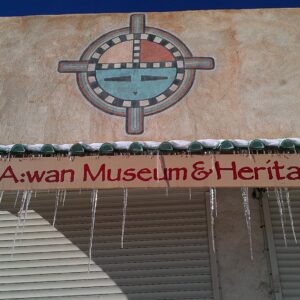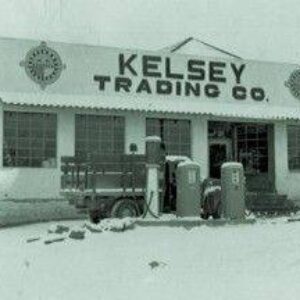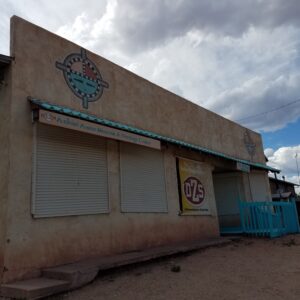Mission and Vision
Established by a small group of Zuni tribal members in 1992, the A:shiwi A:wan Museum and Heritage Center is a Pueblo of Zuni Tribal Program dedicated to serving the Zuni community with programs and exhibitions that help us reflect on our past and are relevant to our current and future interests. As a tribal museum and heritage center for the Zuni people and by the Zuni people, we work to provide learning experiences that emphasize A:shiwi ways of knowing, as well as exploring modern concepts of knowledge and the transfer of knowledge. We define our institution as an ecomuseum: in harmony with Zuni’s environmental values and dedicated to honoring, cultivating, and nurturing dynamic Zuni culture.
As a tribal museum and heritage center – for the Zuni people and by the Zuni people – we work to provide learning experiences that emphasize A:shiwi ways of knowing as well as exploring modern concepts of knowledge and the transfer of knowledge.
As part of its vision, the AAMHC promotes, facilitates and conducts collaborative initiatives with several museums and collecting institutions located both in the United States and abroad. One of the main purposes of these collaborations is to “set the record straight”: to correct inadequate, inaccurate and/or wrong representations of our collections housed at satellite museums and archives. Museum collaborations enable us to negotiate access to our own cultural patrimony and work towards regaining control over the circulation of our objects and knowledge associated with those objects, thereby reconciling historical asymmetries of power between source communities and holding institutions.
Similarly, art is an elemental part of our culture. Whether through performance, two-dimensional or three-dimensional works, the AAMHC strives to broaden the potential of artistic expression in our community. From our collection of ancient Zuni art, exhibitions of Zuni school art, to our A:shiwi Map Art collection, the AAMHC provides a venue and forum for local artists to study and reflect on the possibilities of art in our community.
History
The AAMHC developed from the idea that we can do it ourselves. In the 1970s and 80s, a Zuni museum had been proposed but fell short after architectural drawings were prepared but no funds were available to move forward with construction of a building. Also, it occurred to some that the plan to construct a building and later think about putting things in it and call it a “museum” was really like putting a cart in front of the horse. It also did not adequately consider the rationale and purpose for a Zuni museum. Consequently, a group of interested community members met several times over the course of a year to study the concept of a museum, what a museum means, the baggage and history of museums in general, and how might the group redefine what a museum could mean to Zuni. Ultimately, the group decided what Zuni really needs is a place for A:shiwi people to understand why we are the way we are. Soon afterwards, the group incorporated as a non-profit organization, and the A:shiwi A:wan Museum and Heritage Center was born. As of 2016, AAMHC is now a Pueblo of Zuni tribal museum.
Building
The historic Hebadin’a building was a trading post on and off for many years. It was last used as a store in 1981 and later was used for storage until December of 2002, when it became the A:shiwi A:wan Museum and Heritage Center. Records are unclear, but it is thought the building was built around 1911. The original building included a full size storage basement with a hand-operated elevator. Between 1932 and 1935, office space was added to the south side of the building and the front was expanded about 1940 or 1941. The front addition was not perfectly constructed, and a difference in elevations between the original storefront and the addition is obvious as you walk in and see the sag in the floor marking the carpenter’s obvious error. About 1940, Zuni artist Teddy Weahkee painted two sun faces on the outside upper face of the building entrance.
Staff
- Curtis Quam
Museum Technician and Cultural Educator



